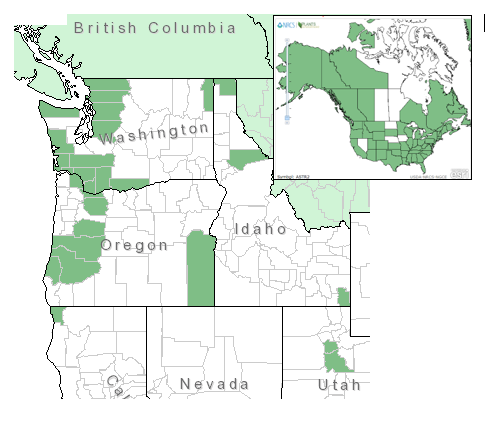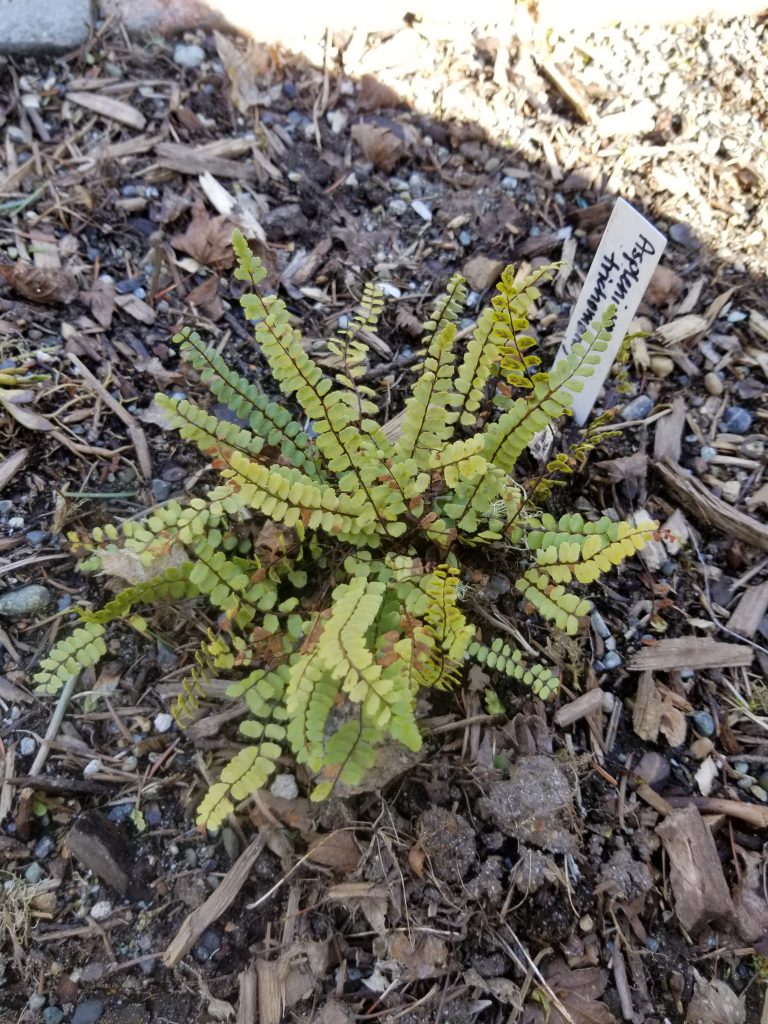Asplenium trichomanes L. Spleenwort family–Aspleniaceae
(ass-PLEE-nee-um tri-ko-MAH-neez)
Names: Asplenium means not-spleen referring to the historical use of spleenwort to treat spleen problems. Trichomanes means hairy mane. Maidenhair Spleenwort is also known as English Maidenhair. The term “maidenhair” probably comes from the hair-like leaf stalks just as for Maidenhair Fern.
Relationships: Asplenium is a genus of about 700 species of ferns, with about 30 native to North Amercia and several more to Puerto Rico. A few species are used ornamentally as houseplants or in woodland rock gardens.

Distribution: Maidenhair Spleenwort is a variable species, found nearly worldwide.
Habitat: It grows in rocky habitats in temperate and subarctic regions and in mountainous regions of in the tropics. It is native throughout most of the United States, including Hawaii.
Diagnostic Characters: Fronds are very narrow, 10-25cm long, with small oval to round, paired leaflets on a dark purplish-brown rachis.
…

In the Landscape: Kruckeberg writes: “It is one of our best rock garden ferns, and a superb container plant;” Hitchcock writes: “Both our plants (aspleniums) are attractive, but A. trichomanes is much nicer and the more tractable.” It can be grown in wall crevices
.
.
.
.
.
Links:.
Consortium of Pacific Northwest Herbaria
WTU Herbarium Image Collection, Plants of Washington, Burke Museum
E-Flora BC, Electronic Atlas of the Flora of British Columbia
Jepson Eflora, University of California
Ladybird Johnson Wildflower Center
Hardy Fern Library
Native American Ethnobotany, University of Michigan, Dearborn

